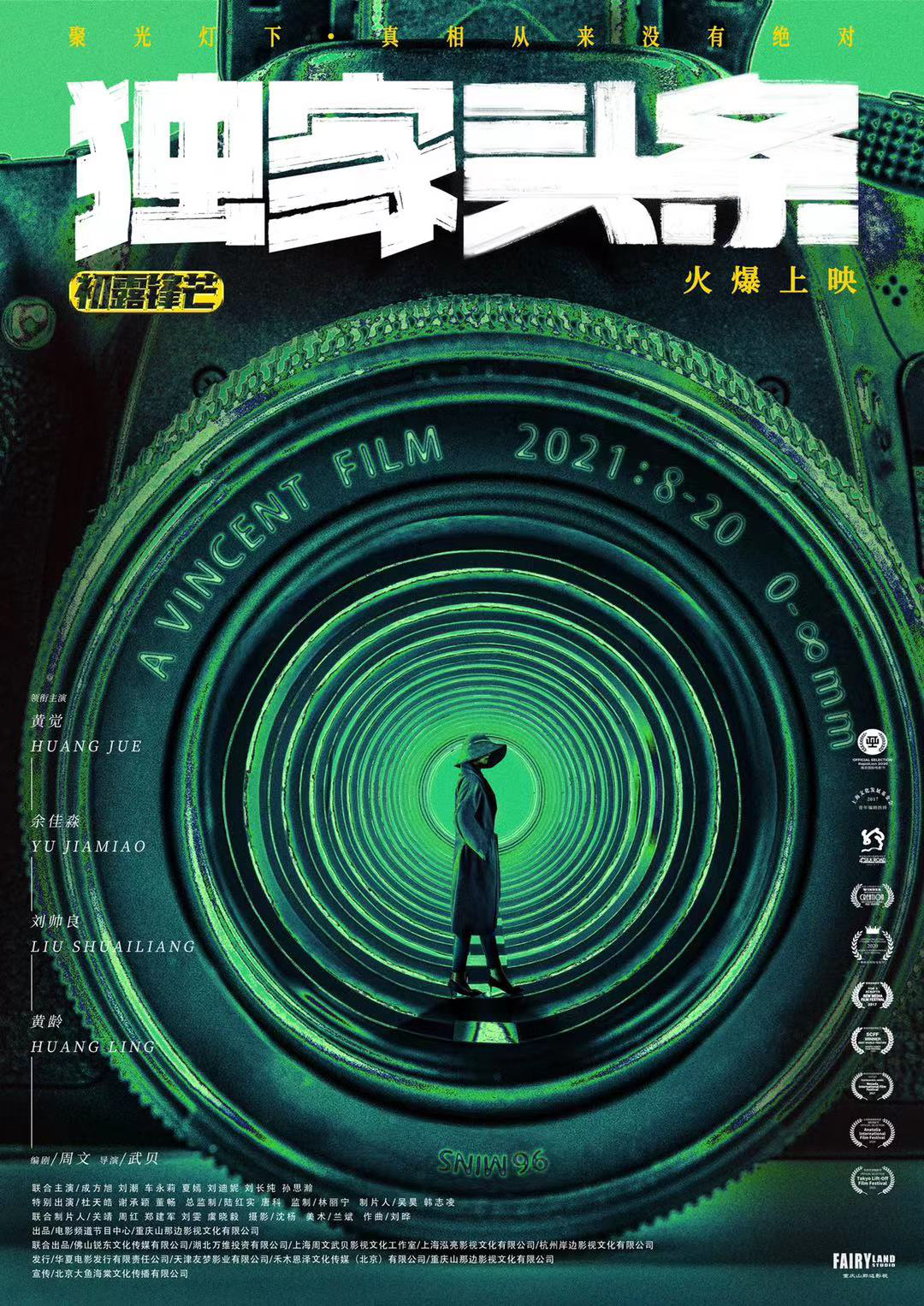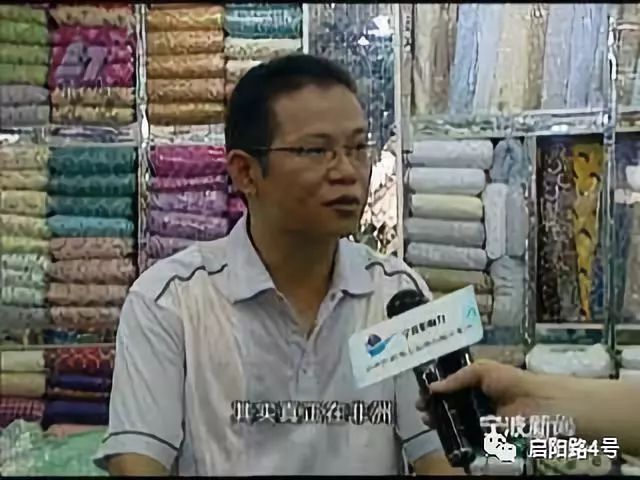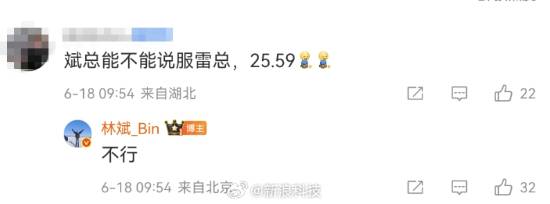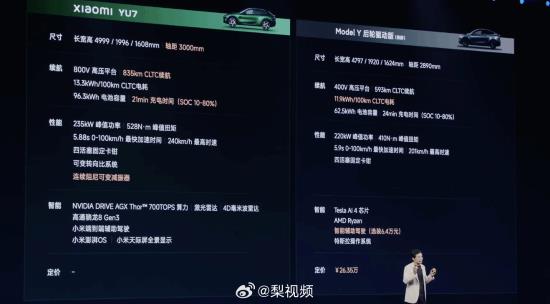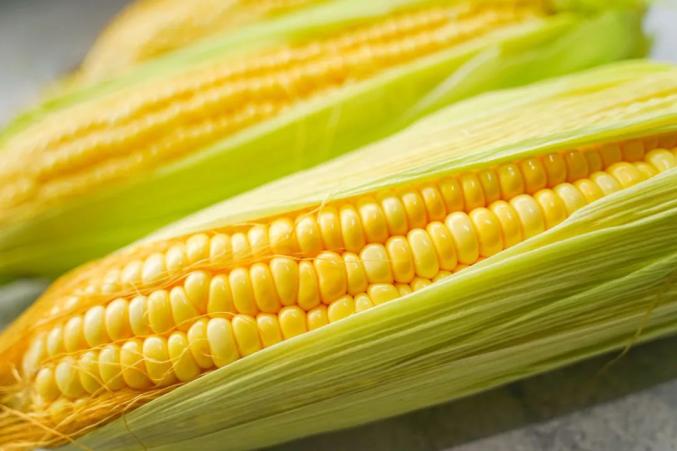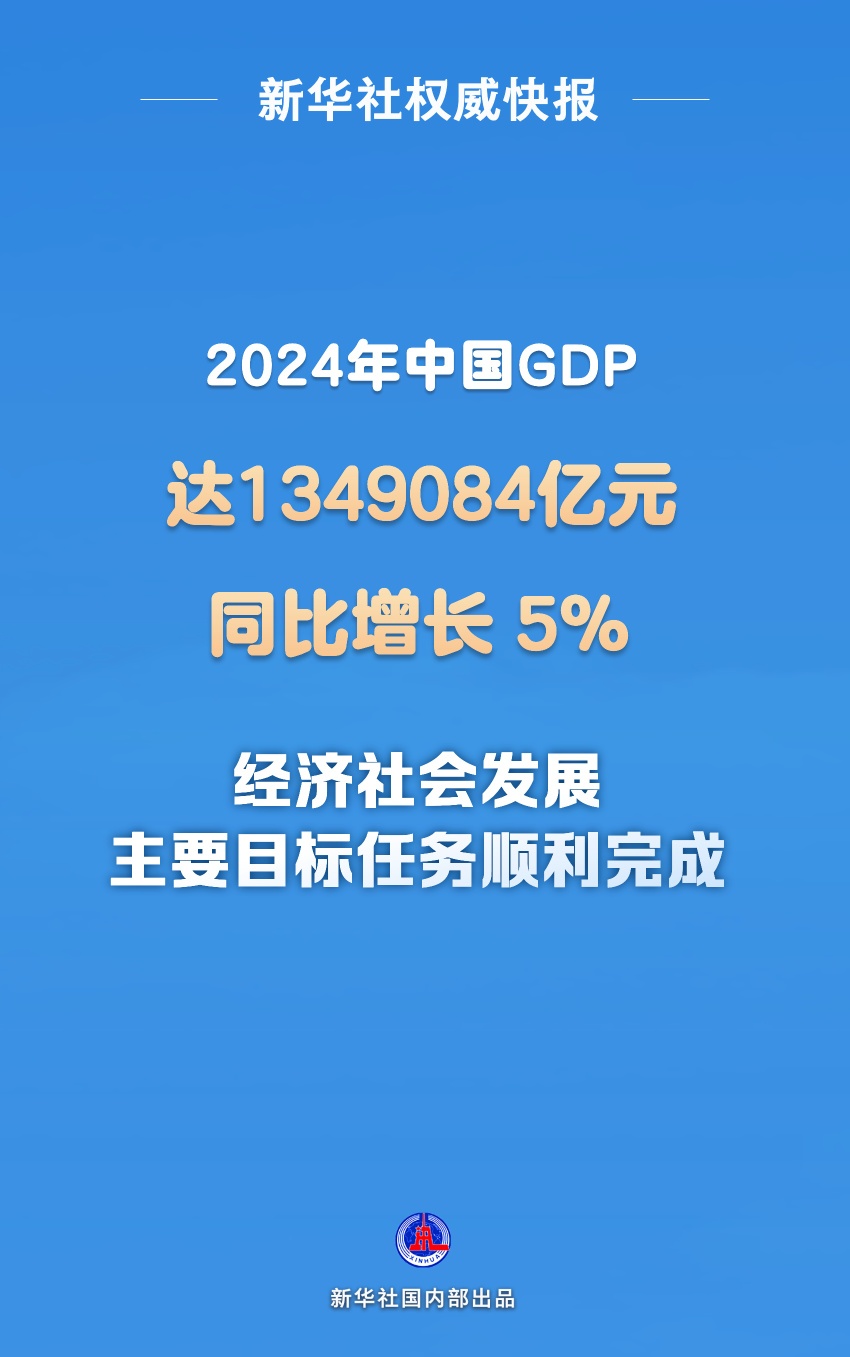() The operating comments of the Board of Directors in 2023 are as follows:
I. The industry in which the company is located during the reporting period.
During the reporting period, the company mainly engaged in LED, semiconductor memory new generation information technology business, comprehensive energy service business and advertising media business, providing customers with customized and integrated solutions.
(a) the new generation of information technology business in the industry
1. LED industry
China has written its strong support for the development of the third-generation semiconductor industry into the Tenth Five-Year Plan. LED is an important industry field of the third-generation semiconductor and has been widely used in many application scenarios such as lighting, backlight and display. 2023 is a year in which challenges and opportunities coexist: the downward pressure on the global economy has not diminished, the impact of global public health events has weakened, the macro economy has gradually recovered, and the overall market is still full of vitality; New challenges, new opportunities, new technologies and new applications coexist, and the LED industry as a whole is under pressure to repair. During the reporting period, the concentration of packaging links continued to increase and the competition became increasingly fierce; The overall revenue of the packaging industry is under pressure, and the sub-sectors such as automotive electronics and MiniLED are growing rapidly; The demand recovery of overseas lighting market has accelerated and exports have accelerated; Domestic market segments such as municipal lighting, commercial lighting and educational lighting are picking up, driving the LED industry forward.
2. Semiconductor memory industry
The semiconductor memory industry naturally has a strong periodic property. Since the second half of 2022, the unbalanced state of oversupply in the storage market caused by sluggish terminal demand and high inventory of enterprises has led to the decline of NANDFlash and DRAM prices for four consecutive quarters from Q3 2022 to Q2 2023. During this period, the original storage factories started to reduce production and continued to reduce production, drastically reducing supply, trying to slow down the downward trend of prices and reduce inventory pressure; However, the production reduction effect has a time limit, and the continuous decline of this price has caused huge performance losses to the original storage factory, and the continuous decline will even affect the medium and long-term technology investment and capacity planning. As a result, under the change of strategy of giving up the market share and turning to restoring profitability as the primary goal, the original storage factory began to strongly increase the storage price from the third quarter of 2023. The storage market became a de facto low point in the second quarter of 2023. In the third quarter, the prices of some products diverged, and in the fourth quarter, the storage prices rose in an all-round way. In the second half of 2023, the storage price rebounded, breaking the downward trend since the third quarter of 2022, and the price returned to the upward track.
According to the data of CFM flash memory market, the global storage market scale decreased by 20%, increased by 9% and increased by 16% in the first quarter, the second quarter and the third quarter of 2023, respectively. It is expected to maintain the double-digit growth rate in the fourth quarter and resume the year-on-year growth, but the storage market scale in 2023 will still decrease by 38% to 86.8 billion US dollars year-on-year. In 2023, eSSD, with enterprise/server as the main application field, consumed about 29% of the global NANDFlash production capacity, Mobile products with smart phone applications as the main consumption capacity, and cSSD with PC applications as the main consumption capacity.
Affected by the continuous production reduction of the original factory, the rising wafer price, the month-on-month warming of the three major storage application markets of PC, mobile phone and server in the second half of 2023, and the acceleration of artificial intelligence, the income change of storage application manufacturers showed a trend of first restraining and then rising, and it became a low performance in the first quarter of 2023. Stimulated by the rebound of storage prices in the third quarter, the market demand for stocking increased rapidly, which led to the gradual increase of storage application manufacturers’ income and the rebound of operating profit margin.
(2) Comprehensive energy industry
In essence, comprehensive energy service is to change the previous mode of separate planning, design and operation of electricity, gas, cold and heat, and coordinate and optimize the distribution, conversion, storage and consumption of all kinds of energy in operation by means of information technology, intelligent technology and management improvement. Its core value lies in improving energy utilization efficiency and realizing energy conservation and emission reduction.
Energy conservation and emission reduction is an inevitable requirement to achieve the policy goal of "carbon neutrality". Under the background of "carbon neutrality" policy, the country has successively introduced the policy of "double control of energy consumption" in terms of total energy consumption and intensity, and gradually turned to the policy of "double control of carbon emission", further highlighting the value of energy-saving services. The development of energy-saving service industry promotes the demand for comprehensive energy services.
(3) Advertising media industry
In 2023, with the outbreak of AI big model, the rise of small program games and micro-short plays, China’s Internet advertising industry has significantly demonstrated the characteristics of diversification, innovation and intelligence. According to China Internet Advertising Data Report 2023, the scale of Internet advertising market in China is estimated to be 573.2 billion yuan in 2023, an increase of 12.66% compared with 2022, and the growth rate tends to be flat and the competition is intensified. With the further increase in the proportion of Internet advertisements, short video advertisements and effect advertisements, TV advertisements, long video advertisements and brand advertisements are on the decline, and TV advertisements and long video advertisement service providers are facing the challenges of shrinking market demand, fierce competition and transformation and upgrading.
II. Main businesses of the Company during the reporting period
(A) a new generation of information technology services
1. LED business
The company is mainly engaged in the midstream packaging and downstream application business of the LED industry. It is a comprehensive provider and service provider of high-end LED light source device packaging, LED lighting application products and LED lighting engineering integrating R&D, design, production, sales and construction, providing customers with customized and integrated solutions.
The company’s LED light source device packaging mainly includes SMD, LAMP, IRM and large-size backlight products, which are widely used in consumer electronics, TV backlight, fire protection and security, automotive electronics and smart home. LED lighting products mainly include three-proof lamps, street lamps, industrial and mining lamps, panel lamps, lamp tubes and advertising identification modules, lamp strips, straight lamps, blackboard lamps and classroom lamps, which can be used in the fields of rail transit lighting, municipal lighting, sign lighting, commercial lighting and educational lighting.
2. Semiconductor memory service
The main body of the company’s semiconductor memory business is Wanrun Semiconductor, a holding subsidiary. During the reporting period, Wanrun Semiconductor mainly focused on the design, research and development and sales of semiconductor memory in accordance with the idea of R&D and sales first. Since its establishment, Wanrun Semiconductor has adhered to the market demand, and formed a product matrix with solid state disk (SSD) and embedded storage (eMMC) as the main forms, which can be applied to storage application scenarios such as consumer, industrial and enterprise.
During the reporting period, Wanrun Semiconductor mainly focused on the design, research and development and sales of semiconductor memories; Adhere to market demand guidance, conduct product design, R&D and material selection through research and testing of storage medium characteristics, development of storage application technology, etc. According to different market demands, purchase wafers or chips, master control chips and other main and auxiliary materials from suppliers, entrust packaging, testing and other links, and then sell them to domestic and foreign customers through direct sales or distribution. Under the distribution mode, it is buyout sales. In order to cultivate the core competitiveness of testing technology, the company invested in the construction of R&D testing line to conduct automatic testing of solid state hard disk (SSD).
(2) Comprehensive energy business
The company’s comprehensive energy business mainly focuses on cultivating comprehensive energy services such as public buildings and industries, and new energy services such as distributed photovoltaic and wind power.
(3) Advertising media business
The company is mainly engaged in TV advertising content marketing and Internet digital marketing advertising media business, and the implementation subjects are mainly wholly-owned subsidiaries Xinli Media and Billion Wireless.
Third, the core competitiveness analysis
1. Advantages of State-owned mixed ownership listed companies
The controlling shareholder of the company is Changjiang Industry Group, and the actual controller is the State-owned Assets Supervision and Administration Commission of Hubei Province. Changjiang Industry Group focuses on the national strategy and the construction of modern industrial clusters in Hubei Province, and performs the functions of investment operation subject of provincial strategic emerging industries and investment management subject of provincial industrial investment funds, focusing on building six major industrial sectors, including information technology, biomedicine, modern chemicals, automobiles and parts.
As a mixed-ownership listed company controlled by the State-owned Assets Supervision and Administration Commission of Hubei Province and controlled by Changjiang Industry Group, the resource advantages of Changjiang Industry Group in the field of industry and funds will empower and help the company to extend the chain and strengthen the chain, and make it bigger and stronger.
2. Technical advantages and qualification advantages
Companies adhere to the supremacy of technology, technology is paramount, and constantly pursue technological innovation and progress. During the reporting period, the company established a multi-level scientific and technological innovation management system by selecting and appointing the "Vice President of Science and Technology", introducing the "Chief Engineer" and establishing the "Science and Technology Innovation Department" to enhance its scientific and technological innovation capability and technical strength.
During the reporting period, Hengrun Optoelectronics obtained the re-examination of the certificate of high-tech enterprise, was rated as a specialized and innovative small and medium-sized enterprise in Guangdong Province, and was recognized by Dongguan Intelligent Vehicle Internal and External Display and Lighting Engineering Technology Research Center; The qualification certification of light source and lighting products has been strengthened, and some products have passed LM-80, AEC-Q102 or CE, ENEC, CCCF and other certifications. Obtained a number of utility model and design patents; Develop products such as automotive electronic interior lights, infrared invisible light, POBMiniLED and rail transit lighting, enrich product matrix and improve product competitiveness. Rishi Optoelectronics obtained the re-examination of high-tech enterprises and was awarded as a specialized and innovative small and medium-sized enterprise in Shenzhen; Improve the market access qualification of educational lighting products, and the blackboard lamp and classroom lamp series products have passed the standard test; Obtained an American invention patent and a number of utility model and design patents; Actively participate in the formulation of industry standards, and it is an outstanding unit in drafting the White Paper on Education Lighting Industry in China in 2022 and the Group Standard for Energy Efficiency Rating in LED strip. Zhongzhu Tianyou and Wanrun Wisdom were rated as specialized and special new SMEs.
The company’s TV advertising business has always been the core agent and deep partner of Zhejiang Satellite TV and Hunan Satellite TV, providing advertising services for advertisers in popular variety shows; Mobile Internet advertising media business has achieved mainstream channel coverage, and it is an important partner of today’s headline, huge amount of Sichuan, Guangdiantong, Interesting Headline, Aauto Quicker, bilibili and other channels. During the reporting period, the company improved the precision delivery and marketing effect and enhanced its core competitiveness by increasing the investment in content creativity and material production, and strengthening the digital and intelligent technology delivery and operation capabilities. During the reporting period, Billion Wireless became the highest A1 agent in today’s headline industry. It was listed in the Qingyun Cup-South China Championship with its "optimized service power", and was successfully selected into the "China Digital Marketing Ecology Map (2023 Edition)" with three major tracks: media agency, creative agency and case agent, and won the 10th TMA mobile marketing award-influence service provider.
3. Advantages of industrial chain synergy.
The LED business of the company has now formed a collaborative layout of the middle and lower reaches industrial chain integrating packaging, lighting, contract energy management, landscape lighting design and construction. The LED lighting lamps produced by Hengrun Optoelectronics and Rishang Optoelectronics can be combined with the comprehensive energy-saving service of Wanrun New Energy, and applied to the landscape lighting and lighting project of Zhongzhou Tianyou, which has good synergy advantages in cost, delivery, quality assurance and customer service. Hengrun Optoelectronic Co., Ltd. and Sunrise Optoelectronic Co., Ltd. can provide a full range of products for rail transit lighting projects, from station halls to inspection pits, from advertising light boxes to guiding signs, and provide customers with a complete set of solutions.
4. Brand and customer advantages
After 20 years of development and accumulation, the company has formed a unique brand of LED packaging and lighting application, and its products have been welcomed by the high-end market in terms of technology, quality and customer service. The company has a high brand awareness in the fields of 3C electronic display instructions, TV backlighting, smart home, fire protection and rail transit lighting, advertising logo lighting, etc. It is in the first echelon of the industry, and its customers are mainly listed companies or their subsidiaries, large enterprise groups, brand enterprises, specialized and innovative industries.
The company has been an in-depth partner of mainstream TV media such as Zhejiang Satellite TV and Hunan Satellite TV for many years, providing TV advertising content marketing services for advertisers of automobiles, household appliances and consumers, and its main customers include (), () and (). The company’s Internet advertising and marketing services mainly focus on the industry’s head customers in the fields of Internet services and online social interaction. With good brand and operation ability, the company deepened cooperation with the media, obtained credit from the media, and reduced financial pressure.
Fourth, the main business analysis
1. Overview
According to the company’s strategic plan for 2022-2025, the key operations in 2023 are as follows:
First, implement the main strategy of the new generation of information technology and consolidate the main business:
(1) LED business:
During the reporting period, combined with the global macroeconomic and social environment and the development of LED industry in the middle and lower reaches, the company adhered to market demand guidance, dug deep into stock business and actively expanded incremental business, including:
1. LED light source device packaging field: adhere to the differentiated market segmentation strategy, actively optimize the customer and product structure, consolidate and dig deep into the LED component market such as consumer electronics, backlight, fire protection and security, smart home, dig deep into the incremental demand of old customers such as (), and actively expand new customers in the home appliance and office application market; Vigorously develop the LED automotive electronics market and achieve effective results. We won the bid for four projects: Hanwang, Wangwang, Tengshi and Destroyer, and newly developed a number of customers to achieve double growth in revenue and profit.
2. LED lighting application field: Deeply cultivate the rail transit lighting market, give full play to the advantages of "the first echelon", and win the bid for many projects such as Shenzhen Metro Line 11 and Chengdu Metro Line 30, so as to speed up the delivery of Suzhou Metro and Shenzhen Metro. On the basis of stable identification module, actively lay out strip lighting, increase product research and development, equipment automation and market investment, and realize rapid growth of strip lighting revenue; Make efforts to educate the lighting market, increase investment in product research and development, qualification certification and sales team building, and win the bid and deliver the educational lighting projects of many schools such as Sichuan and Hainan; Strengthen the construction of distribution channels at home and abroad, expand the market coverage, and increase the promotion of product business at home and abroad. It has successively appeared in the 15th Shanghai International Automobile Lamps and Vehicle Lighting Technology Exhibition, the 6th China China International Import Expo(CIIE), the 25th Hong Kong Autumn Lighting Exhibition and other large-scale exhibition activities, and actively went to Europe, America, Southeast Asia and other overseas countries or regions to conduct on-the-spot market research and visit customers.
3. LED lighting engineering field: Efforts have been made to develop LED lighting engineering business in relatively developed areas and cities and increase the collection of creditor’s rights. However, due to the macroeconomic environment, the progress of contracted projects, the landing of new projects and the collection of creditor’s rights are less than expected.
(2) Semiconductor memory business:
The main body of the company’s semiconductor memory business is Wanrun Semiconductor, a holding subsidiary. During the reporting period, Wanrun Semiconductor achieved an operating income of about 128 million yuan, and its main work is as follows:
1. Due to the recovery of the downstream application market demand and the reduction of the upstream wafer factory to accelerate the destocking of the industrial chain, the semiconductor memory industry gradually entered the upward cycle in the second half of 2023, and Wanrun Semiconductor seized the market opportunity and vigorously explored the market;
2. Strengthen the construction of talent team, introduce professional talent teams in R&D technology, supply chain development and market channels, implement the employee stock ownership plan, and stimulate the entrepreneurial motivation of the officers;
3. Intensify research and development, focusing on testing technology and gradually improving firmware technology; Building a research and development laboratory; In product research and development, it has the independent hardware design ability of storage module; In testing, the solid state hard disk (SSD) test line has been built, the internal test specifications of various storage products have been formulated, the development of automatic test equipment and mass production test software has been carried out, and the mass production aging tester and sample tester have been successfully developed; In the R&D test, research and develop flash memory chip test technology with Huazhong University of Science and Technology to create an independent and controllable flash memory particle screening technology; Since its establishment at the end of 2022, 39 new products have been developed, involving storage application scenarios such as consumer, industrial and enterprise. Some products have completed CE, FCC, RoHS certification or professional platform certification such as Loongson and Haiguang, and entered the stage of mass production sales or small batch trial production; Declare and obtain invention patents and software copyrights; Obtained ISO9001:2015 quality system certification;
4. Accelerate the channel construction. The company adopts the sales practice of semiconductor memory industry, sells to domestic and foreign customers such as China Mainland, Hong Kong, China, Taiwan Province and Japan through direct sales and distribution channels, and establishes partnerships with many distribution channels to accelerate market development;
5. Accelerate the brand building of MasonSemi: register the trademark of "Changjiang Wanrun"; By building websites and making product manuals to promote enterprises and products, by holding a sub-forum on the development of storage semiconductor industry in the Science and Technology Innovation Week of Changjiang Industry Group to release new products and technical cooperation, and by participating in large-scale activities such as the exhibition of domestic storage products in China International Import Expo(CIIE), Shanghai, the visibility and influence of Wanrun Semiconductor and its product brands will be improved.
The second is to implement the sub-strategy of comprehensive energy services and stabilize the chassis:
During the reporting period, the company successfully acquired 100% equity of Fuxin Kaidi New Energy Development Co., Ltd. and Heping Lukaidi New Energy Development Co., Ltd., and quickly cut into the new energy field of wind power; The completion of the () 5.99MW distributed photovoltaic project under the controlling shareholder has enhanced the company’s profitability, stabilized the company’s development chassis, and laid a solid foundation for the promotion of "main industry".
Third, promote the advertising media business to upgrade to integrated service providers and promote high-quality development:
First, shut down the advertising media business with losses and weak profitability in time to reduce costs and increase efficiency; The second is to increase investment in the production and intelligent operation of content materials, upgrade to comprehensive service providers of creative planning and technical operation, and improve the added value of services; Third, actively optimize the customer and product service structure, increase the development efforts of head customers, brand customers and direct sales customers, and improve the ability to resist risks and profitability; Fourth, constantly enrich the media channels, dig deep into the needs of customers for multimedia advertising, and improve customer stickiness.
Fourth, deepen the reform and improve the quality and efficiency of operation and management;
According to the action deployment requirements of "year of improving management efficiency" and "year of deepening reform", we have taken various measures to promote deepening reform by making a list of key tasks, organizing special seminars, and investigating and communicating with grass-roots units, and achieved remarkable results in operational management. First, strengthen business scheduling and empower subsidiaries to develop; Second, strengthen overall financing management, broaden financing channels and reduce financial expenses; The third is to fully launch the financial Kingdee system to improve financial management and control capabilities and work efficiency; The fourth is to establish and improve the innovation incentive mechanism to stimulate the entrepreneurial atmosphere of the officers.
Fifth, lose weight and keep fit, and achieve practical results in the disposal of assets:
Firmly implement the strategic plan, shut down and transfer the low-quality and inefficient subsidiaries, businesses and projects with small revenue scale, long-term losses and lack of development prospects, further improve the efficiency of asset allocation, and achieve slimming and fitness, reducing burdens and increasing efficiency. First, shut down the loss-making advertising media business in time to reduce expenses; The second is to transfer the comprehensive energy subsidiary whose development is restricted to realize efficiency improvement and capital recovery; The third is to actively revitalize idle real estate to generate income and increase efficiency.
Sixth, strengthen the responsibility to ensure a stable and orderly production safety;
In strict accordance with the principle of "safety must be managed in the industry, safety must be managed in the business and safety must be managed in the production and operation", the company will do the work of safety production in detail, and the overall safety situation of the company in 2023 will be stable and orderly.
V. Prospect of the Company’s Future Development
(A) the industry pattern and trends
1. Semiconductor memory industry
Integrated circuit industry is one of the basic and core industries of modern information industry. Semiconductor storage is an important branch of integrated circuit industry, which is widely used in artificial intelligence, cloud computing, automotive electronics, industrial control, data center, consumer electronics and other fields. The downstream application scenarios of industrial chain are rich and the market demand is broad. According to the forecast of CFM flash memory market, on the basis of improved demand and price recovery, the global storage market will rebound strongly by 48% in 2024, returning to the level of 2020 (US$ 128 billion). Among them, the growth rate of DRAM will exceed that of NANDFlash, which will drive the growth of the whole market.
With the accelerated evolution of the world’s unprecedented great changes in the past century, the central government and the Hubei provincial government have paid more and more attention to the development of the integrated circuit industry, and have launched a series of industrial support policies to achieve independent security and controllability. Among them, the Ministry of Industry and Information Technology and other six departments jointly issued the Action Plan for High-quality Development of Computing Infrastructure, encouraging the use of independent storage devices in key information infrastructures, and promoting the localization application of key storage components through all-flash storage machines; The Hubei Provincial Government issued the Action Plan for Accelerating the Construction of "Optical Valley of the World", proposing to develop memory chips with the focus on national memory bases, accelerate the domestic substitution process of key equipment, basic raw materials and core components, and gradually establish an independent and controllable industrial chain and supply chain system to promote the overall improvement of domestic semiconductor manufacturing level and accelerate the construction of "World Storage Capital". The domestic semiconductor memory industry will usher in great development opportunities, and domestic semiconductor memory manufacturers will have broad growth space.
2. LED industry
According to TrendForce Jibang Consulting’s "2024 Global LED Lighting Market Analysis -1H24", it is predicted that in 2024, 5.788 billion LED light sources and lamps will be retired after reaching the service life limit, which will bring considerable demand for secondary replacement. It is estimated that the global LED lighting market is expected to grow by 4% to 60.9 billion US dollars in 2024. As the largest producer and exporter of global LED industry, there will be many opportunities in China’s LED lighting market. In addition, at present, the overall development of LED industry has entered a critical period of phased transformation, and leading enterprises in the industry continue to increase investment in research and development of new technologies and new products to seize emerging and fast-growing markets. With the development of LED technology and the improvement of technical performance, energy efficiency ratio and cost performance of LED products, LED application scenarios are constantly expanding, and the market segments such as automotive LED electronics, infrared invisible light and MiniLED will accelerate their growth, and the product penetration rate is expected to continue to increase, providing more development opportunities for the industry.
3. Comprehensive energy industry
The energy-saving and environmental protection industry has been recognized as a strategic emerging industry by the state. There are a large number of energy-saving needs in manufacturing, smelting, petrochemical and other industrial enterprises, and there is also a large space for energy-saving transformation in public institutions such as the government and buildings and facilities in commercial or civil fields.
At present, comprehensive energy services are still in the initial stage in China. With the change of economic situation and the expansion of service targets, the demand for comprehensive energy services will be more and more extensive, and the market potential will be gradually released.
4. Advertising media industry
Science and technology development and data drive are two carriages that drive the development of digital marketing industry. With the continuous development of artificial intelligence, big data, Internet of Things and other technologies, the advertising industry will be further digitized and intelligent, and artificial intelligence, big data and other technologies will be used to improve the advertising effect and delivery accuracy. At the same time, influenced by the new model, new ecological development and changes in consumer behavior, the advertising industry will show the development trend of cross-border integration and integrated marketing.
(II) Company development strategy
The company will firmly implement the "14th Five-Year Plan" development strategy, vigorously develop a new generation of information technology "main industry" with LED and storage semiconductor electronics industries as the core, cultivate and develop a "subsidiary industry" of comprehensive energy services, build a new development pattern of "one master and one deputy" representing new quality productivity, adhere to the basic policy of making excellent stocks and expanding increments, and coordinate and integrate through "one investment, two turns to three development", two-wheel drive of industry and capital, and resource sharing. Realize the kinetic energy conversion and high-quality development of old and new industries, enhance core competitiveness, expand income scale and improve profitability, so that the company will become a new generation of scientific and innovative listed companies with industry influence in the field of information technology.
(3) Main business plan
1. Adhere to strategic focus and strengthen investment in mergers and acquisitions.
In 2024, the company will maintain strategic strength, adhere to strategic focus, and strengthen investment and mergers and acquisitions in the field of new quality productivity of LED automotive electronics and semiconductor memory. The company will actively tap resources such as Wanrun Technology and the controlling shareholder system, the Yangtze River Economic Belt, Guangdong-Hong Kong-Macao Greater Bay Area and so on through two junior college classes of LED automotive electronics and semiconductor memory, give full play to the platform role of Hubei state-owned holding and market-oriented listed companies, and realize the extension of LED and semiconductor memory main industries through endogenous investment and/or outreach mergers and acquisitions, make them bigger and stronger, realize the transformation and upgrading to a new generation of information technology main industries, and effectively promote the strategic planning.
2. Insist on promoting stability by making progress, and strive for development after establishing first.
In 2024, the company will speed up the adjustment of business structure and enhance profitability by striving for progress in stability, promoting stability in progress, advancing with multiple heads, and breaking first.
(1) Deeply cultivate LED market segments and make LED business bigger and stronger.
LED light source device packaging field: adhere to the strategy of mid-to-high-end, differentiated market segmentation, and on the basis of consolidating the first echelon of 3C market, first, increase investment in automotive electronic product lines and related supporting facilities, establish industry-leading automotive electronic product production lines and management systems, and achieve breakthrough growth in automotive electronic product revenue; The second is to dig deep into the infrared invisible light market, focus on the fire security and smart home market, and open up more new application fields at the same time; Third, actively expand new mid-to high-end market segments and accelerate the development and mass production of new products such as POBMiniLED and equipment visual inspection.
LED lighting application fields: First, strengthen the construction of domestic and foreign brands and marketing channels, explore the "Belt and Road" market through going out and bringing in, expand the sales scale, especially the ODM channel, focus on developing large customers and industry-leading customers, and improve market coverage; Second, focus on 3C electronics, robots, elevators, automotive electronics and other high value-added applications in the fields of sign lighting and linear lighting, and focus on developing large-scale projects to provide customers with mid-to-high-end, customized integrated solutions to enhance profitability; The third is to upgrade and improve the qualification of educational lighting, optimize and enrich eye protection lighting products such as classroom lights and blackboard lights, enhance the market competitiveness of products and expand the business scale; Explore the application markets of municipal lighting, educational lighting and rail transit lighting within the controlling shareholder system and in Hubei, give play to the synergistic integration effect, and expand the market share in Hubei.
LED lighting engineering field: Give full play to the advantages of lighting engineering, take Guangdong-Hong Kong-Macao Greater Bay Area, Chengdu-Chongqing Economic Circle and Central China as key areas for business development, and focus on and tap the lighting update needs of cities and cultural tourism involved in major events such as the 2025 Bay National Games; Actively expand professional lighting and intelligent lighting engineering business; Tap the market demand and project resources within the controlling shareholder system and Hubei area, give play to the synergistic integration effect, and expand the lighting engineering and electromechanical engineering business.
(2) Accelerate the layout of semiconductor memory business and cultivate performance growth points.
Improve product layout and enrich product matrix: focus on providing high-quality storage solutions, promote the update iteration of original flash memory consumer products, and improve product competitiveness; Accelerate the design, development, testing and certification of industrial, enterprise and vehicle code products of flash memory, expand application scenarios and enrich product matrix; At the same time, adhere to market demand guidance, make full use of channels and technical resources, add DRAM business, and cultivate new growth points.
Strengthen brand and channel construction: establish a brand planning department, promote the construction of Yangtze River Wanrun Semiconductor’s own brand and channel by increasing the construction of direct sales and distributors, expanding the independent seaport, and () linkage, increase the market development of products and increase the market share.
Strengthen R&D technical ability and cultivate core competitiveness: build core testing technology and promote the construction of high-reliability flash memory laboratory; Continue to promote flash memory characteristics research and particle testing projects, focusing on sub-projects such as memory simulation software development and memory protocol tester development; Accelerate the introduction of mass production of self-developed test equipment; Increase investment in R&D of vehicle regulation products; Strengthen the declaration of intellectual property and high-tech enterprises.
(3) tap the potential of existing projects and increase the development of comprehensive energy business.
By establishing and perfecting the system, improving the process and emergency solutions, we will do a good job in diagnosis and investigation in time, improve the operation and management capabilities of existing wind power and photovoltaic projects, reduce production and operation costs, and improve production efficiency and benefits; Increase the development and collaborative integration of comprehensive energy services such as public buildings and industries within Wanrun Technology and the controlling shareholder system.
(4) The advertising media business keeps the stock stable and improves the quality.
First, steadily promote the cooperation of stock head customers such as Dongyangguang, Xilinmen and () in Hunan Satellite TV, Zhejiang Satellite TV and other TV platforms and mobile Internet media platforms, and dig deep into the multimedia advertising demand of stock customers; The second is to further improve the matching degree between media resources and customer needs, and improve customer satisfaction and stickiness around new head channels such as Youku and iQiyi. The third is to continuously improve the content creative planning and technical operation capabilities, and improve the service effect and added value; Fourth, strengthen risk prevention and control in the whole process of business, and do a good job in credit management and debt collection management.
3. Strengthen the collection of creditor’s rights, and compact the responsibility to control risks.
First, strengthen the efforts to collect overdue creditor’s rights: classify overdue creditor’s rights in detail, manage the overdue creditor’s rights by one enterprise, one policy and one list, compact the responsibility to individuals, and adopt the method of promoting talks by fighting and combining talks with fighting to fully collect debts and reduce risks; Second, do a good job in the management of accounts receivable: strengthen the early warning before maturity, grasp the rhythm of payment, shorten the account period, collect more early, and strictly control the incremental overdue risk; The third is to strengthen incentives and constraints. By strengthening the responsibility of creditor’s rights collection, the effect of creditor’s rights collection will be linked to the management assessment of subsidiaries, and the responsibility of each collection subject will be further compacted to complete the annual collection task.
4. Strengthen scientific research and innovation, and work hard to add vitality.
Establish and improve the system and mechanism of scientific and technological innovation, focus on strengthening the scientific and technological innovation of new productivity in the fields of LED and semiconductor memory, increase investment in research and development, strengthen the declaration of intellectual property rights, and stimulate the vitality of high-quality development. In the field of LED light source devices, we will focus on the development of LED automotive electronic interior and exterior decoration display instructions and lighting, POBMiniLED and infrared invisible light products; LED lighting application field, focusing on mainstream lighting products, in-depth development in smarter, healthier and more environmentally friendly fields; In the field of semiconductor memory, we will build core competitiveness such as hardware design capability, flash memory chip testing capability and intelligent mass production testing technology, strengthen cooperation with Industry-University-Research, accelerate the transformation of scientific and technological achievements, and become a scientific and innovative listed company with industry influence.
5. Enhance coordinated development and promote integration through up-and-down linkage.
Focusing on the development strategy and business resources of controlling shareholders, we will accelerate the coordinated development of related industries with controlling shareholders. First, strengthen the functions of the second headquarters in Wuhan, gradually transfer some headquarters management functions to the Wuhan office center, and strengthen communication and linkage within the system; The second is to strengthen the coordinated development of industries, strengthen the docking with resources in Hubei Province, deepen the cooperation with enterprises in the controlling shareholder system in the fields of LED, semiconductor memory, comprehensive energy and automotive electronics, and increase revenue and efficiency through collaborative integration; The third is to promote the interaction between industry and finance, strengthen cooperation with fund companies and investment companies within the controlling shareholder system, and help the development of real industries with industrial investment.
6. Deepen fine management and take measures to increase benefits.
Firmly establish the "benefit-centered" business philosophy, adhere to the simultaneous promotion of tapping potential and increasing efficiency, increasing revenue and reducing expenditure, and comprehensively improve operational efficiency and quality. First, strengthen operation scheduling: take solving practical problems as the guide, improve the operation scheduling mechanism, find and solve problems in time through on-site coordination and regular supervision, and fully empower subsidiaries; The second is to optimize the control process and establish a hierarchical and classified "one enterprise, one policy" control list to improve the control efficiency; Third, comprehensively strengthen cost control, improve the cost control system, strengthen budget cost control, set the total limit and single limit of cost control, strictly control expenses and unnecessary expenses, and explore the incentive mechanism of cost reduction.
7. Adhere to compliance management, prevent risks and build safety.
First, improve the risk control system, improve the business risk control mechanism and process, resolve the stock risk and strictly control the incremental risk; Second, strengthen fund management, do a good job in fund scheduling and long-term and short-term fund use planning, expand financing channels and reduce the cost of funds; The third is to strengthen safety management, do a good job in safety production strictly from reality to detail, and build a safe defense line; The fourth is to improve the institutional process system to ensure that there are systems to follow, operate according to processes, and operate in compliance.
(4) Possible risks and countermeasures
1. Supply chain risk and market competition risk brought about by changes in global macroeconomic and social situation.
With the global economic and trade frictions, geopolitical conflicts and other uncertainties and uncertainties in the global macroeconomic and social situation, the normal circulation of the supply chain of the semiconductor electronic industry chain faces certain risks, which may lead to unstable supply of raw materials and large price fluctuations, thus adversely affecting the development of China’s semiconductor industry. If the macroeconomic and social development is less than expected, it will further intensify the market competition in the LED industry, semiconductor memory industry and advertising media industry where the company is located, which may lead to a decline in gross profit margin.
The company will closely follow the changes in the supply chain of the global semiconductor electronics industry chain and take appropriate measures in a timely manner to reduce the risks in the supply chain of the industry chain; Focus on high-end differentiated segments, increase product research and development, improve the level of automation and intelligence, and enhance profitability; Strengthen brand and market channel construction and broaden business sources.
2. Risk of accounts receivable recovery
The customers of the company’s LED lighting projects are mainly government units and institutions. Due to the macroeconomic environment, there is a risk that some "old-fashioned" customers’ accounts receivable cannot be recovered, which is not conducive to the promotion of old projects and the undertaking of new projects, thus affecting their performance. The advertising media business is affected by industry policies and development, customer operating conditions, etc., and there may be risks that individual accounts receivable cannot be recovered on schedule, which will adversely affect performance.
The company will strengthen the collection of creditor’s rights, and control the risk of accounts receivable recovery by strengthening the collection, doing a good job in accounts receivable management and strengthening incentives and constraints.
3. The development of semiconductor memory business is less than expected.
The company has entered the field of storage semiconductors for a short time, and is still in the initial stage of capacity building of products, supply chains, channels and brands. In the course of operation, it may face a series of risks, such as industry development falling short of expectations, unstable supply of main raw materials and price fluctuations, supply chain development and integration, iteration of technological innovation and product upgrading, and brain drain. The company will give full play to the advantages of Hubei State-owned listed company with mixed ownership, located in Guangdong-Hong Kong-Macao Greater Bay Area, tilt its capital, policies, talents and other resources to Wanrun Semiconductor, and support it to effectively expand and strengthen its semiconductor memory business, making it a new generation of information technology main industry of the company.
4. Risk of exchange rate fluctuation
The company’s lighting business mainly focuses on overseas exports. At present, the RMB exchange rate is subject to a floating exchange rate system, and the company’s international business is settled in foreign currency. The price change of RMB to US dollars and other currencies may bring uncertain influence to the company’s product price competitiveness and income.
The company will pay close attention to the exchange rate changes, and reduce the adverse impact of exchange rate fluctuations on the company’s performance by improving product technology innovation and service level and reasonably controlling foreign exchange risk exposure.
5. Risk of policy change
New energy and comprehensive energy businesses such as wind power and photovoltaic are greatly influenced by industry policies, and the risk that the operating performance of this part of the company fluctuates greatly due to the adjustment and change of industry policies is not ruled out. The company will pay close attention to policy trends, adjust business strategies in a timely manner, cultivate business sectors with policy-oriented layout, and actively participate in the policy formulation process to strive for a favorable industry development environment.
6. Risk of impairment of goodwill
If the macro-economy and the development of the industry in which the company acquired the enterprise are still less than expected, the operating performance of the company acquired the enterprise may also be less than expected, which will lead to the risk of goodwill impairment and adversely affect the overall operating performance of the company.
The company will strengthen its operation and management, empower the development of acquired enterprises, and promote the expansion of its business scale and the improvement of its profitability through measures such as resource coordination, risk control and financial support.
Investors are requested to invest rationally and pay attention to risks.
